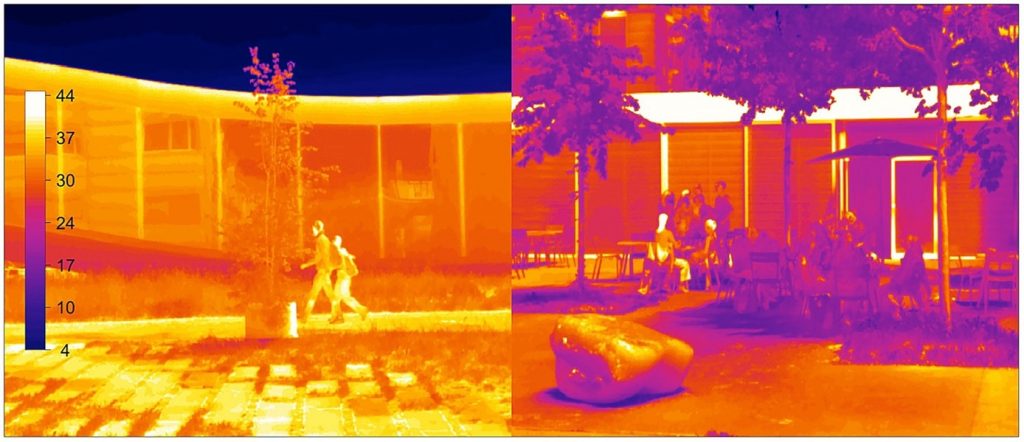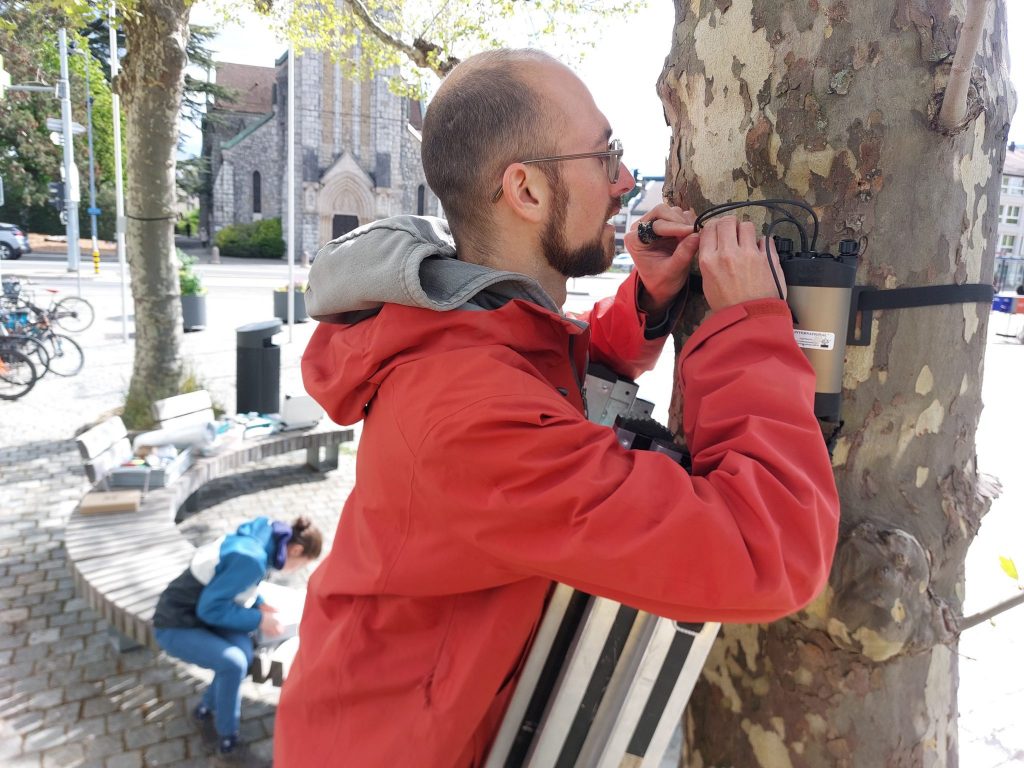Urban areas are heating up much faster than their surrounding environments, creating a heat island that critically affects the health of their inhabitants. As a consequence, more and more people are being exposed to extreme urban heat, which has in the recent past resulted in recurrent high mortality among the urban population, especially during heat waves.

Transpiration and shading from vegetation, particularly from large trees, helps to mitigate urban heat islands. The individual effects of shading and transpiration on the urban microclimate are, however, not yet well quantified, because direct measurements of transpiration are still rare. As the complex interactions of urban vegetation with the urban microclimate, including air temperature and wind speed, are far from being understood, it is difficult for city planners to make the best use of the beneficial effect of vegetation.
We aim at quantifying the effect of urban tree transpiration on heat island mitigation in an ongoing research project. For this, we are measuring tree transpiration (sap flow), latent heat flux, the urban microclimate, and several leaf physiological traits during the growing season. Using trees in cities of Geneva and Lausanne as a test platform, our goals are to establish the link between climate variability, tree transpiration and urban cooling potential for a broad range of tree species in diverse urban settings (ecology/ecophysiology).


For more information contact Christoph Bachofen.